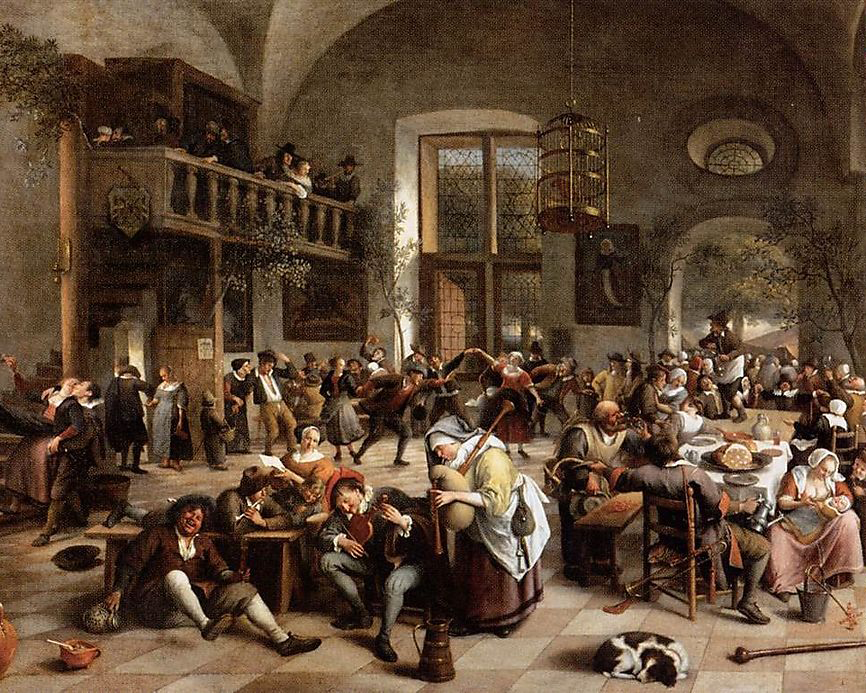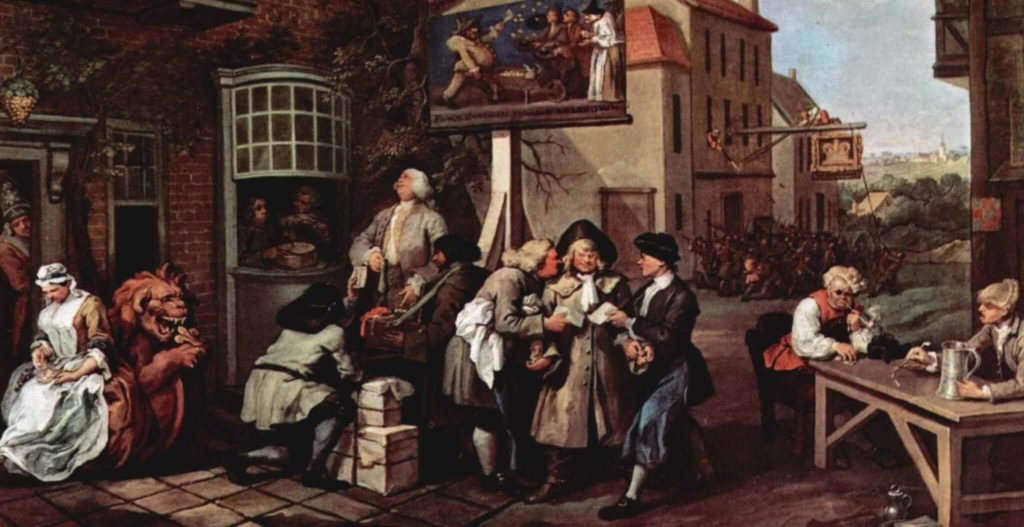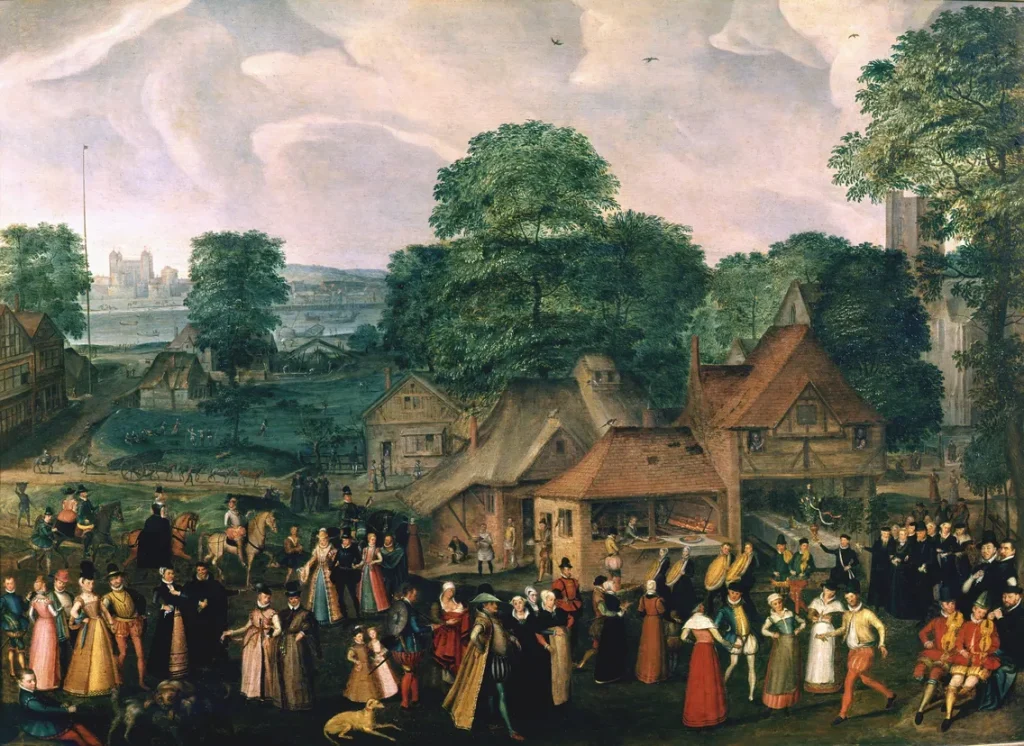The idea of the renaissance brings to mind two sorts of meals; the lavish affairs of the court in which hedonistic amounts of food were heaped before royalty, and the simple gruellike porridge that the peasantry had to be satiated with. However, we know that even the poorest of peasants did their best to bulk out their diet through foraging and hunting. But what did folks eat when they were tired of hearth-cooked meals or wanted to pop out to the tavern?
It may surprise you to learn that many people in London (and similar large cities) simply did not have the kitchen facilities to cook with. The reason was fairly simple, a population boom that carried London from around 30,000 to 250,000, putting space at a premium with rich and poor scrunched up against one another. A kitchen, with all the necessary equipment to make a decent meal, was something of a luxury. So many people ate out on a regular basis if they wanted something hot and fresh to fill their bellies
Communal Ovens

Lacking a kitchen and suitable food storage was quite the problem for a heavily populated city. But there were alternatives. Many parishes sported a communal oven, allowing for people to prepare their dough and pottage at home before bringing it to the ovens for cooking. This allowed for hot, fresh food even to the poorest members of the neighborhood. Some were even sponsored by the local church or local lord who provided fuel or had the establishment built.
Hawkers & Hucksters

London had no shortage of street sellers offering their wares to anyone with coin to pay. Women, called hucksters, frequently took on the role of selling, moving through the crowds with a basket and a loud voice. The food was typically premade or something that could be eaten right away. Fresh fruit, oysters, griddlecakes, and meat pies were some of the favorites of the time. These entrepreneurial folks often sold game such as rabbits and fresh fish for those who could cook at home.
Alehouse & Cookshops

By the start of the 1600s there were over a thousand alehouses licensed to operate within London, serving up frothy brews as well as bread and cheese which helped to sop up the alcohol. These were cheap establishments known for their rough crowd, but they were accessible to everyone. It was something of a communal hub, where your everyday fellow would go to share a brew after work, catch up on the gossip, and occasionally slander those in power to a sympathetic ear.
Taverns & Inns

If you wanted something a touch more civil, you might take yourself to a proper tavern for a decent meal and even wine. Taverns typically offered a wider array of foods such as meat pies and fish along with the staple bread and cheese. Taverns frequently had lodgings available, resulting in travelers and occasionally a higher class of food and drink, thus attracting a better clientele.
Kitchens, servants, and especially cooks were at a premium, making the appeal of eating out all the more attractive. This also provided a boon to some of the poorer areas as it allowed locals to make a bit of extra coin for what they had. These eateries were so popular they actually had to enforce regulations in the establishments to prevent them from becoming too rowdy and crowded! These were some of the first of what could be deemed ‘health code regulations’ for London’s food stalls and alehouses.
Where do you think you would have eaten? Would the cookhouses of the docks make for a fine meal? Or would you have the coin for a tavern meal and good company?
